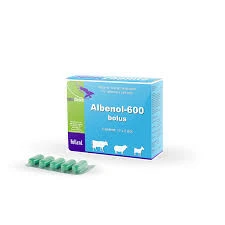- Afrikaans
- Albanian
- Amharic
- Arabic
- Armenian
- Azerbaijani
- Basque
- Belarusian
- Bengali
- Bosnian
- Bulgarian
- Catalan
- Cebuano
- Corsican
- Croatian
- Czech
- Danish
- Dutch
- English
- Esperanto
- Estonian
- Finnish
- French
- Frisian
- Galician
- Georgian
- German
- Greek
- Gujarati
- Haitian Creole
- hausa
- hawaiian
- Hebrew
- Hindi
- Miao
- Hungarian
- Icelandic
- igbo
- Indonesian
- irish
- Italian
- Japanese
- Javanese
- Kannada
- kazakh
- Khmer
- Rwandese
- Korean
- Kurdish
- Kyrgyz
- Lao
- Latin
- Latvian
- Lithuanian
- Luxembourgish
- Macedonian
- Malgashi
- Malay
- Malayalam
- Maltese
- Maori
- Marathi
- Mongolian
- Myanmar
- Nepali
- Norwegian
- Norwegian
- Occitan
- Pashto
- Persian
- Polish
- Portuguese
- Punjabi
- Romanian
- Russian
- Samoan
- Scottish Gaelic
- Serbian
- Sesotho
- Shona
- Sindhi
- Sinhala
- Slovak
- Slovenian
- Somali
- Spanish
- Sundanese
- Swahili
- Swedish
- Tagalog
- Tajik
- Tamil
- Tatar
- Telugu
- Thai
- Turkish
- Turkmen
- Ukrainian
- Urdu
- Uighur
- Uzbek
- Vietnamese
- Welsh
- Bantu
- Yiddish
- Yoruba
- Zulu
നവം . 25, 2024 21:47 Back to list
Tylosin Injection for Veterinary Use in Animal Health and Treatment Options
Tylosin Injection in Veterinary Medicine
Tylosin is a macrolide antibiotic that is widely used in veterinary medicine to treat a range of bacterial infections in livestock and pets. It is particularly effective against Gram-positive bacteria and some Gram-negative bacteria, making it a valuable tool for veterinarians. This article explores its uses, effectiveness, and important considerations when administering tylosin injection in veterinary settings.
Tylosin Injection in Veterinary Medicine
The mode of action of tylosin involves inhibiting bacterial protein synthesis, which ultimately leads to the cessation of bacterial growth. Its pharmacokinetics allow for effective tissue penetration and distribution, ensuring that it reaches the site of infection. The route of administration can vary based on the condition being treated; however, injection is often preferred for faster therapeutic effects, especially in severe infections.
tylosin injection veterinary

Despite its effectiveness, there are important considerations when using tylosin. First and foremost, a proper diagnosis must be established to ensure that the infection being treated is indeed susceptible to tylosin. Veterinary professionals often employ culture and sensitivity tests to determine the causative agent and its antibiotic resistance profile. Misuse or overuse of tylosin can lead to the development of antibiotic resistance, a pressing issue in both human and veterinary medicine.
Moreover, potential side effects must be taken into account when administering tylosin. While generally considered safe, some animals may experience adverse reactions, such as gastrointestinal disturbances, including nausea, vomiting, or diarrhea. In rare cases, allergic reactions can occur, necessitating immediate veterinary intervention. Therefore, monitoring the animal post-injection is crucial to ensure its well-being.
Additionally, the withdrawal period for tylosin must be adhered to in food-producing animals. This is the time that must pass after the last dose before the animal can be slaughtered for food. Adhering to these guidelines is crucial to ensure that tylosin residues do not enter the human food supply, which could pose health risks to consumers.
In conclusion, tylosin injection is a significant component of veterinary medicine, offering effective treatment for various bacterial infections in animals. By using it responsibly and under the guidance of a qualified veterinarian, practitioners can improve animal health outcomes while mitigating the risks associated with antibiotic resistance. As always, ongoing education and adherence to best practices in antibiotic use remain critical in promoting sustainable and effective veterinary care.
-
Guide to Oxytetracycline Injection
NewsMar.27,2025
-
Guide to Colistin Sulphate
NewsMar.27,2025
-
Gentamicin Sulfate: Uses, Price, And Key Information
NewsMar.27,2025
-
Enrofloxacin Injection: Uses, Price, And Supplier Information
NewsMar.27,2025
-
Dexamethasone Sodium Phosphate Injection: Uses, Price, And Key Information
NewsMar.27,2025
-
Albendazole Tablet: Uses, Dosage, Cost, And Key Information
NewsMar.27,2025













